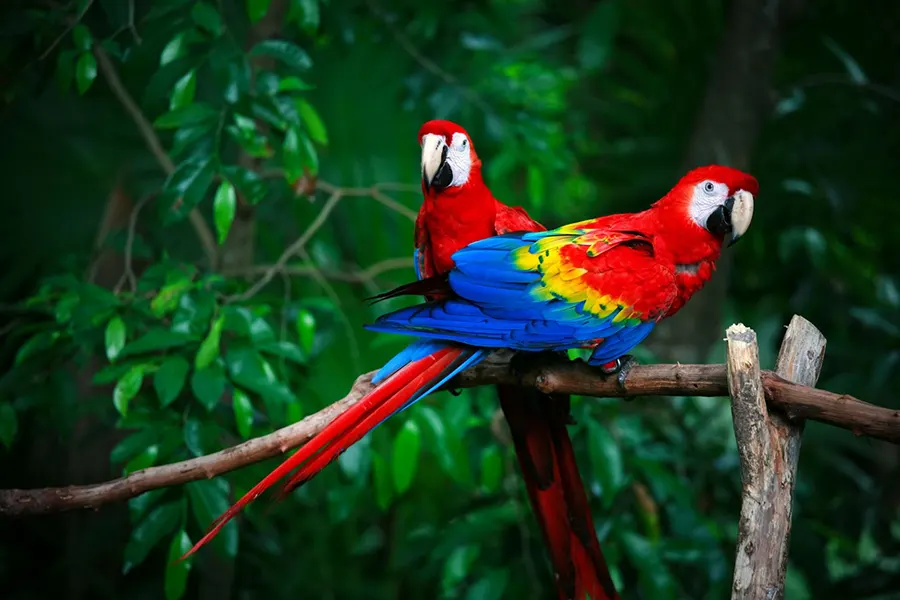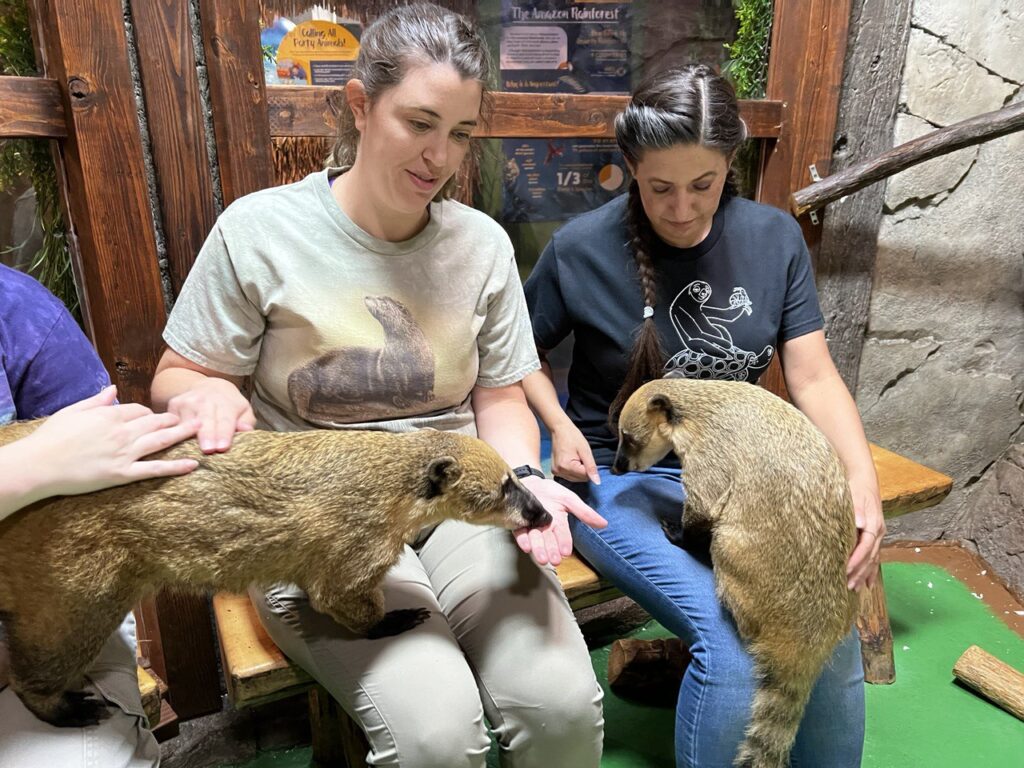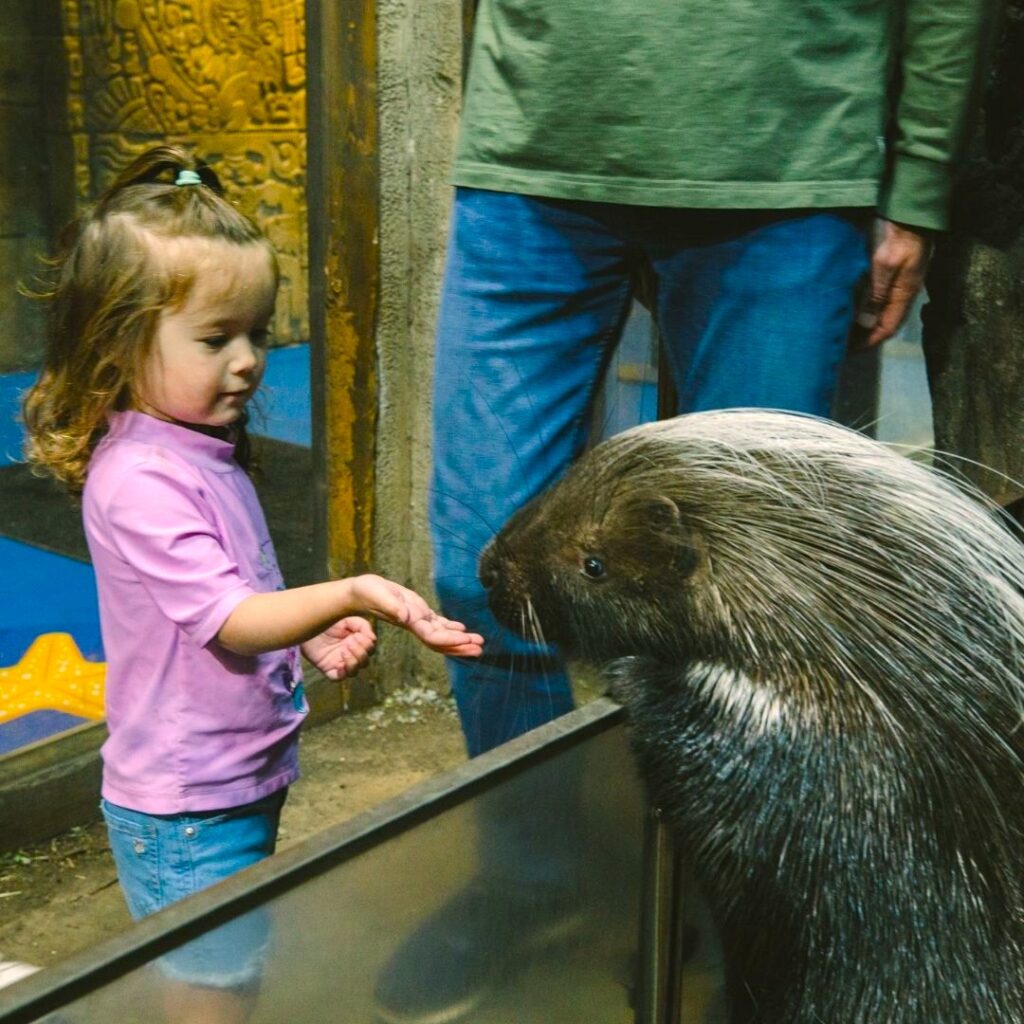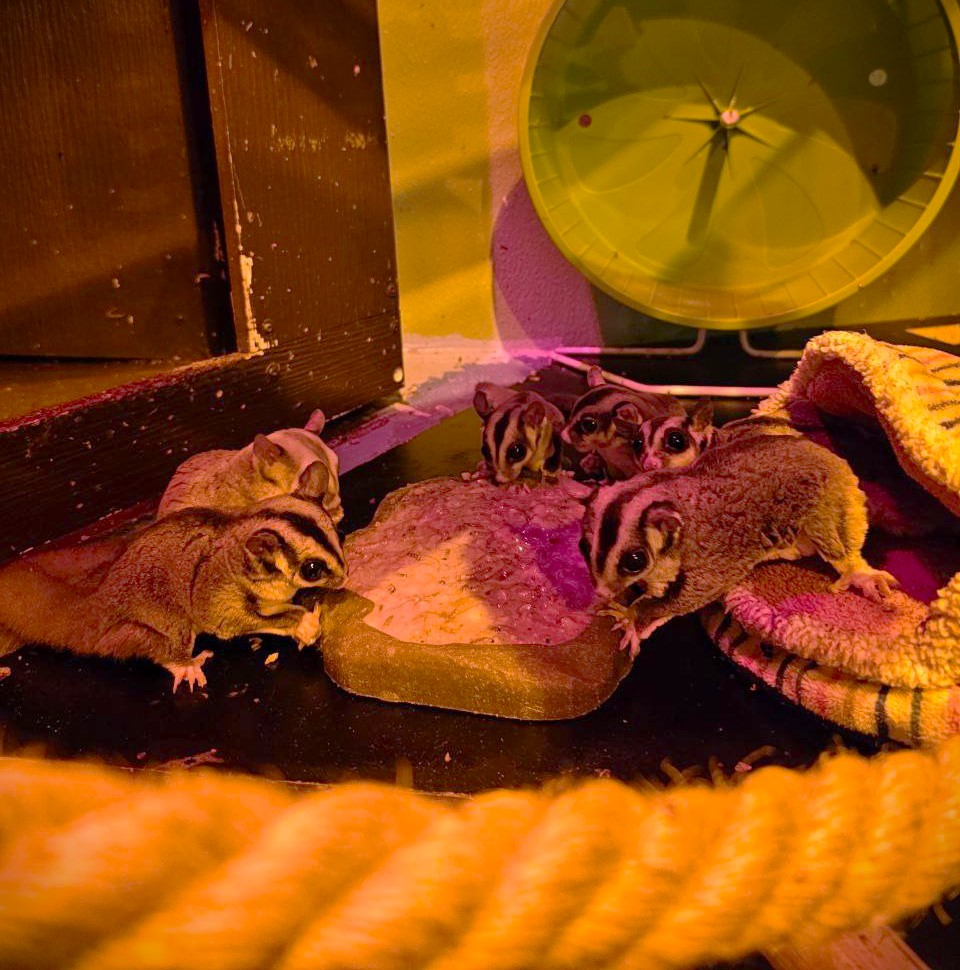SeaQuest Guide to Exotic Birds
Share it on:

It may be safe to say that one of the most important scientific discoveries of our time is that birds are actually living dinosaurs.
150 million years later, birds have evolved to become majestic eagles, chipper robins, and floating hummingbirds. It is estimated there are over 18,000 types of bird species on the planet. Simply look up to the sky, and you’re sure to see hundreds each day. In honor of U.S. Bird Day, May 4th, this guide offers a look at a few of the world’s most amazing exotic birds. They take many shapes and forms and showcase vibrant colors in nature. Here’s a list of some of our favorite exotic bird species!
What are Exotic Birds?
Exotic birds refer to animals that are not native or indigenous to the current area where they are observed. There are cases where types of birds are bred in countries such as the United States, even though their biological parents were not. These species are also considered exotic. Exotic birds can be any animal that is not commonly kept in the home but can be domesticated.
These are the more common types of exotic birds that are generally adopted as pets in a home environment.
List of Exotic Birds
- Macaw Parrot
- Lorikeet
- Toucan
- Cockatoo
- Cockatiel
What is a Macaw?
The most recognizable breed of exotic bird in the world is the macaw. The colorful feathers of the macaw have attracted the attention of humans throughout history. Classified in the Psittacidae (true parrot) family, this social bird is known not only for its size, being the largest of all parrots, but also for its recognizable vocal abilities.
What is the difference between Macaws and Parrots?
There are a few distinct differences between macaws and parrots. For example, all macaws are technically parrots, but not all parrots are macaws. Most macaws are larger than the average parrot, both in length and weight, as well as wingspan. Parrots are found to have more of a variety of colors than macaws. Many species of parrots have longer lifespans than macaws.
How long do Macaws live?
Generally, the average lifespan of a macaw is between 25 and 50 years in the wild. In captivity, they can live up to 70 years. Some species of macaw have actually lived to be 100 years old! Keep in mind that macaws need regular activity, stimulation, and attention to thrive in an environment, particularly a domesticated one. Owning a macaw is a big commitment since some have a very long lifespan. Make sure to do research on owning a macaw and how to take care of a pet macaw before you adopt!
What do Macaws Eat?
Macaws are omnivores, meaning they eat both meat and plant foods. However, the generally y follow a vegetarian diet. Vegetables such as carrots, sweet potatoes, and cauliflower are ideal snacks, and fruits such as apples, berries, or mango hit the sweet spot. Don’t forget nuts and seeds! They have strong beaks that can easily open hard shells of nuts and seeds. A macaw’s beak is strong enough to crack a coconut shell!
How Long Do Macaws Sleep?
Macaws generally sleep between 10- 12 hours at night. Much like humans, they generally awaken when the sun rises and sleep when the sun sets.
Do Macaws talk? Which Macaw is the Best Talker?
Not all species of parrots talk. While parrots are known to be pretty good talkers, some simply do not like to talk or ever learn to do so. However, parrots, particularly the African Grey parrot and Amazon parrot family, are particularly good at imitating human words and sounds.
African Greys have been known to imitate the timbre and tone of a humans voice that may be close to them. They tend to mimic the sound of their owner’s voice almost to a perfect match.
Are Macaws Endagered?
A majority of macaw species are listed as threatened or endangered on the IUCN red list. In fact, over five species are already extinct! Because of this threatened status, they are essential subjects of conservation. Dangers macaws face today are illegal trapping for the pet trade, the rising rate of deforestation in their ecosystem, and being hunted.
What is a Lorikeet?
There are over 50 species worldwide in the group of lorikeets. They can be found throughout southeastern Asia, Australia, and Oceania. Certain species are only found in island habitats such as Polynesia and Papua New Guinea. Lorikeets are slender, lightweight birds growing between 6 to 16 inches.
What is a Rainbow Lorikeet?
One of the most colorful species of lorikeet birds, Rainbow lorikeets certainly live up to their name! Bright green feathers adorn their wings, head, and back. Usually, a deep blue color will show on their face and stomach. They have bright red chests with highlights of yellow and orange. The bright red beaks offset against the blue of their facial feathers, showcasing a vibrant color dynamic.
How long do Lorikeets Live?
The average lorikeet lifespan in the wild is around 12 years. In captivity, they can live to around 20 years of age, but most live longer than that.
What do Lorikeets Eat?
Lorikeets primarily feed on fruits and flowers. Particular favorites are nectar and pollen. Lorikeets are “bottlebrush” parrots meaning they have specialized brush tongues covered in fine hairs that help extract nectar from flowers.
Are Rainbow Lorikeets Endagered?
Currently, 13 species of lorikeet are listed as endangered or vulnerable to extinction. Significant destruction through deforestation has impacted the local ecosystems in certain areas. Lorikeets have now become much more vulnerable to rats and snakes on South Pacific islands.
What is a Cockatoo?
A cockatoo falls into one of 21 parrot species that belong to the Cacatuidae family. Although the Cacatuidae family is included in the order Psittaciformes (parrots), cockatoos are not classified as “true parrots.”
One major distinction between cockatoos and other parrots is the feathers on top of their heads. Cockatoos have unique crest feathers that move depending on mood. Cockatoo is a beautiful species that has a variety of feathers like grey, white, and black. Cockatoos are affectionate, funny, comical, and mischievous, and generally make wonderful companions when socialized and trained properly.
How Long do Cockatoos Live?
In the wild, cockatoos have a lifespan of 15 to 25 years. However, in captivity or as domesticated pets, cockatoos range from 40 to 70 years of age!
What do Cockatoos Eat?
Cockatoos mostly eat a variety of plants, fruits, and vegetables. Some favorite fruit snacks are bananas, strawberries, blueberries, grapes, and watermelon. Additionally, radish, raisins, lettuce, and sweet potatoes are some other preferred food items.
Why do Cockatoos Dance?
That’s right, this bird is famous for their dance skills! Scientists have discovered that dancing requires strong connections between brain regions involved in hearing and movement. Those connections would only exist in vocal learners or animals that can imitate the sounds they hear.
While cockatoos are not as known for their talking skills, they love music and dancing. In nature, headbangs and footlifts are movements that a cockatoo naturally would make while walking or courting. But domesticated cockatoos have developed their auditory skills, so music triggers the aspect of the brain to move. Their humans may laugh, cheer and give praise, which in turn keeps the bird. Cockatoos can develop close bonds with their human and any attention and praise for the bird brings them immense joy, so they just keep dancing!
Are Cockatoos Endangered?
Certain species of cockatoo are currently listed as threatened or endangered. The Yellow-Crested Cockatoo has been classified as critically endangered, with only between 1,000 and 2,500 yellow-crested cockatoos remaining in the wild. All of these cockatoo species have experienced a significant decline in population. Poaching for pet trade, deforestation, and habitat destruction threaten the species for the future.
What is a Toucan?
Yes, it’s that bird, the one from the cereal box! The common name given to numerous species of tropical American forest birds, toucans are known for their large and strikingly colored bills or beaks. Toucans are some of the noisiest of forest birds, they are known to bark and croak harshly. Toucans tend to roost in treetop bands, and perch high to utter loud calls. The vocalizations act as rallying calls to attract groups of birds to good foraging sites.
How Long do Toucans Live?
In the wild, toucans generally live up to 20 years. Although not as long in captivity as macaw, toucans have a lifespan of 25 years.
What do Toucans Eat?
Toucans are omnivores, so they eat both meat and vegetables. Fruits, meat, insects, and even vegetables.
Some favorite fruits are acai berries, bananas, watermelon, and mango. They are also known to munch on Brazil nuts, bamboo, flowers, grass, mushrooms and nuts.
How Strong is a Toucan’s Beak?
Though they look intimidating, toucan beaks are built lightweight. Toucans do not actually have a lot of leverage in their beaks due to their length. So, while a toucan bite definitely doesn’t feel good (they can put down an uncomfortable amount of pressure), they usually don’t break the skin, and generally, you won’t sustain a serious injury.
Meet an Exotic Bird Today!
Birds of a feather flock together and SeaQuest has the flock to see! Book your SeaQuest exploration today! Set out on an adventure by visiting the website to find location hours, information, and ticket pricing. You can also call and speak to a Guest Ambassador and book your tickets over the phone! You can even hand-feed exotic birds and learn even more about them. Book your one-on-one interaction at one of these SeaQuest locations today: Utah, Las Vegas, Dallas-Fort Worth, Sacramento, Minneapolis, Lynchburg, New Jersey,












